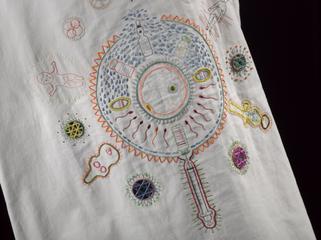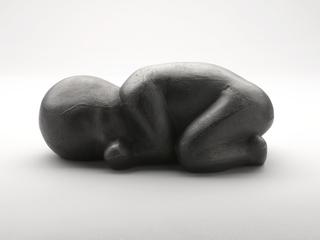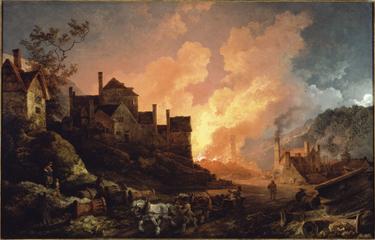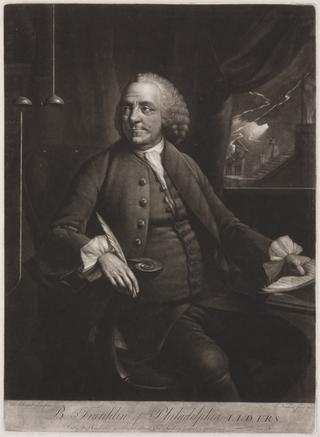
Entrance of Railway at Edge Hill




print. aquatint, handcoloured. Entrance of railway at Edge Hill. 1831. Liverpool & Manchester Railway.
This aquatint was published by Rudolph Ackermann in 1831 as one in a book of prints titled ‘Coloured Views of the Liverpool and Manchester Railway’. The railway had opened the previous year and was the first steam-powered inter-city railway in the world. The book of prints commemorated and celebrated this engineering feat, providing views of the line that people could look at in the comfort of their own homes. The aquatints were engraved by Henry Pyall and S. G. Hughes from drawings that Thomas Talbot Bury made on the spot (i.e. in situ). The prints proved extremely popular: editions were also published in Spanish, Italian, German, and French.
Bury was an architect and artist who engaged in a wide variety of projects. Perhaps his most high profile project was designing details of the Houses of Parliament with fellow architect-artist August Pugin. All in all, Bury’s major buildings include 35 churches and chapels, 15 parsonages, 12 schools, and 20 other large public buildings and private residences in various parts of England and Wales. His artistic practice was similarly varied, including a large picture representing, in a single view, all the buildings he designed (now in the RIBA collection). During the railway mania of the 1830s, he made many drawings of railways. Although Bury is known to have sometimes done the engraving work himself, these railway prints were usually engraved by someone else.
It has been estimated that no fewer than 2,000 prints of railway subjects were produced during the years 1830 to the late 1840s, and scarcely a line opened without at least one view of its engineering accomplishments being published. It is difficult for us today to understand the emotional as well as financial commitment to railways during these early years. The railway was often seen as a slowly spreading symbol of change and progress towards a better world.




